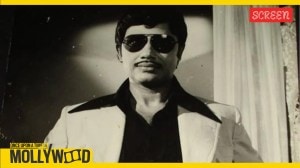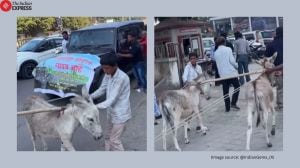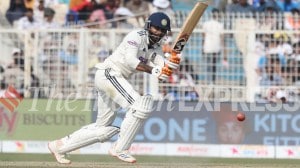Welcome visit
Relations between India and the US have entered sunnier climes and both governments are hoping to confirm it with a visit to India by Pre...

Relations between India and the US have entered sunnier climes and both governments are hoping to confirm it with a visit to India by President Clinton. External Affairs Minister Jaswant Singh has made known New Delhi’s eagerness to welcome the US president. US secretary of state Madeleine Albright has said India is a "missing piece" in Bill Clinton’s life, just the kind of words to warm hearts in this country. A presidential trip, the first in two decades, would be a good way of marking a new phase in the relationship. A shift in policy has been coming about in New Delhi and Washington over the last decade. It has been slow and often uncertain. There is still plenty of scope for serious disagreement even as there is a certain inevitability about closer ties on the economic and political fronts. The size of India’s market and its open society make it an attractive destination for US business; India, in turn, looks to American technology and capital to accelerate economic growth. On issues like combatingterrorism and promoting democracy around the world there appears to be a shared viewpoint. What was for many decades a troubled relationship has with the end of the cold war and the opening up of India’s economy not only become more balanced but also more promising for both sides. It is not surprising therefore that the two capitals are now eager to understand and take aboard each other’s concerns. It helps that the state department during Clinton’s second term has been better informed about South Asia and that the Ministry of External Affairs has come to give trade and other economic issues the weight they deserve. It is a fallacy, of course, to believe relations will become better because that would be mutually beneficial. Both sides have to work hard at it overcoming differences and jettisoning the baggage of the past. Getting the presidential visit going will itself be a pretty tough task. American officials have let it be known the ideal period would be between January and March 2000, that is well beforethe next anniversary of Pokharan-II and before the US primaries turn the spotlight from an incumbent president to potential successors. That does not leave too much time to settle the aap pehle business.
Washington would like India to lay the ground for the Clinton visit by signing the Comprehensive Test Ban Treaty (CTBT). Without that Clinton who has made non-proliferation a key concern of his administration would appear to be rewarding India for Pokharan-II. New Delhi expects Washington to take steps which will make it easier for the Vajpayee government to build domestic support for the CTBT. This circular process has being going on for a year. Unless a compromise is worked out fairly quickly there may be no presidential visit. That would not be a disaster but it would be a pity. It would mean postponing tough decisions. It could mean that differences on nuclear issues which ought to be got out of the way as quickly as possible will linger on perhaps into the next US administration. There will beuncertainties for India about technology transfers and multilateral aid flows. A Clinton visit, in short, would be considerable achievement for both capitals.





- 01
- 02
- 03
- 04
- 05


























